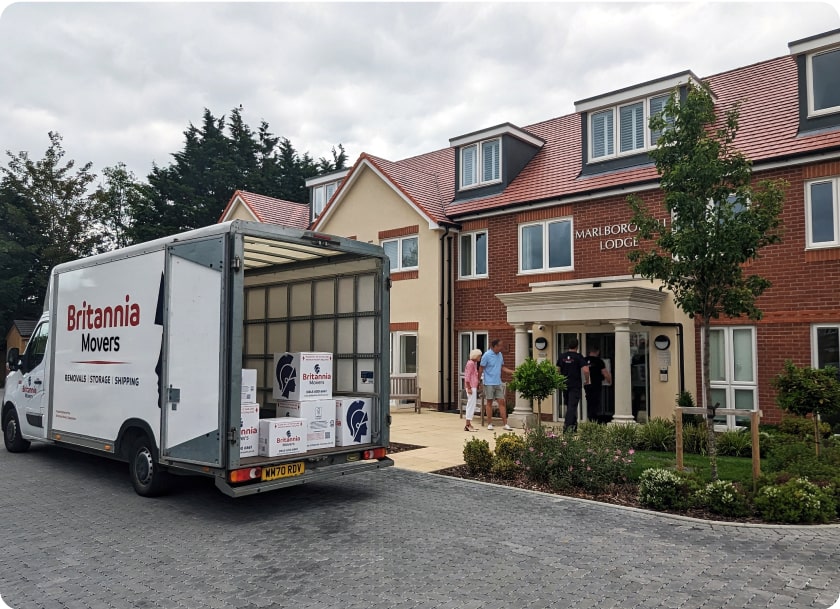The Eco-Friendly Move
Relocating to a new home is exciting, but it’s also one of the most environmentally taxing events many households undertake. Between packing supplies, petrol use, and unwanted items dumped into landfill, the moving process can result in an enormous amount of waste. But it doesn’t have to be this way. By embracing sustainable strategies for moving, you can dramatically reduce your environmental footprint while supporting your local community and often saving money in the process. Whether you’re moving locally or interstate, this guide offers actionable tips for planning a greener relocation—from sustainable packing to choosing the right green removals service.
What is Eco-Friendly Moving?
Eco-friendly moving is about relocating in a way that minimises harm to the environment. It involves conscious decisions that reduce waste, energy consumption, and greenhouse gas emissions. The goal is to carry out the moving process with minimal environmental disruption by using renewable or recyclable resources, reducing landfill contributions, and supporting sustainable services.
Common elements of an environmentally conscious move include:
- Using second-hand or recycled packing materials
- Donating or recycling unwanted goods instead of binning them
- Minimising fuel use and emissions during the move
- Choosing green removals services
- Supporting local recycling and charity networks
Why Sustainable Relocation Matters
Australians generate tens of millions of tonnes of waste each year—and a surprising proportion of it occurs during transitions such as moving home. From discarded furniture and clothes to excessive cardboard, bubble wrap, and plastic bags, the waste adds up quickly.
By opting for a sustainable relocation, you help:
- Reduce landfill build-up
- Lower CO₂ emissions from transport
- Conserve natural resources by reducing the need for new materials
- Set a strong environmental example for others
- Create healthier, less wasteful communities
Even small changes in your moving habits can collectively make a big impact on environmental preservation.
Step 1: Declutter Sustainably Before You Pack
Before you think about boxes or bubble wrap, take time to assess what you actually need to bring with you. Moving presents a perfect opportunity to declutter your home and simplify your life. However, it’s important to do this responsibly.
Sustainable Decluttering Tips:
Donate to charities
Pass on clothes, books, kitchen items, and furniture in good condition to local op shops or non-profits.
Sell or swap online
List items on platforms like Gumtree, Facebook Marketplace, Vinted, or Depop. You’ll give your things a second life and maybe make some money too.
Host a garage sale
Gather your excess items and host a neighbourhood garage sale before moving. This is a low-waste way to rehome belongings.
Give items to friends or family
Offer furniture, appliances, or decor to people you know who may be able to use them.
Recycle what can’t be used
For broken or unusable items, use your local recycling centre. Check with your council for e-waste drop-off points or hard rubbish collection days.
Avoid throwing everything in the skip
Unless it’s absolutely unusable, try not to send items straight to landfill. Sort items into donation, sell, recycle, or reuse piles.
Decluttering isn’t just a chore—it’s a way to simplify your move, save money on transportation, and significantly reduce waste.
Step 2: Use Sustainable Packing Materials
Packing often produces a mountain of single-use plastic and cardboard, most of which ends up in landfill. Instead of buying brand-new boxes and bubble wrap, opt for sustainable options that are reusable, recyclable, or compostable.
Eco-Friendly Packing Solutions:
- Recycled cardboard boxes
Source boxes from previous movers, retail stores, or online marketplaces. Many green removals services also supply recycled moving boxes. - Biodegradable packing peanuts
Avoid polystyrene. Choose biodegradable alternatives made from natural materials like starch, which dissolve in water and are compostable. - Shredded paper or newspaper
These materials are perfect for wrapping delicate items or filling gaps in boxes. - Old towels and linens
Use blankets, pillowcases, and clothes to cushion fragile belongings. They’re reusable and won’t require separate packing. - Reusable crates and bins
Some removals companies rent out plastic moving crates. These are durable, stackable, and zero-waste. - Fabric bags and duffels
Instead of plastic bags, use reusable totes, backpacks, and suitcases to pack non-breakable items. - Eco-friendly tape
Use paper-based tape with plant-based adhesives that can be recycled with cardboard.
Sustainable packing materials not only reduce your environmental footprint but also help you stay more organised during your move.
Step 3: Choose a Green Removals Company
One of the most important decisions in planning an eco-friendly move is choosing the right moving company. Some companies prioritise sustainability and actively implement green practices in their day-to-day operations.
What to Look For in a Green Removals Service:
- Fuel-efficient vehicles
Ask if the company uses modern, low-emission trucks or electric/hybrid vehicles for local moves. - Route planning and load consolidation
Efficient route mapping and combining multiple clients’ loads reduces unnecessary kilometres and fuel use. - Recyclable packing materials
Green removals companies often provide eco-friendly boxes and wrapping supplies that are recyclable or biodegradable. - Packing and unpacking services
Companies that offer packing services with sustainable materials ensure nothing is wasted and all items are handled carefully. - Carbon offsetting initiatives
Some businesses go further by investing in tree planting or renewable energy projects to balance their emissions. - Waste-conscious practices
Check if they have partnerships with local recycling centres or charities for donating unwanted goods.
Britannia Lanes, for example, provides recyclable packing materials and efficient logistics services that help reduce the carbon output of your move.
Step 4: Reduce Waste During the Move
Even after packing carefully, moving day can still generate unnecessary waste. With people coming in and out, last-minute throwaways, takeaway packaging, and broken items, it’s easy for things to spiral out of control.
Waste-Reducing Strategies on Moving Day:
- Bring reusable water bottles and coffee cups for the day
- Pack a “zero-waste” moving day lunch in reusable containers
- Keep boxes labelled for rubbish, recycling, and donations handy during unpacking
- Use leftover fabric or linens as drop cloths instead of plastic sheeting
- Schedule a recycling drop-off or waste collection service for post-move clean-up
Being prepared means you’ll create less waste and spend less time sorting out messes once you arrive.
Step 5: Recycle or Repurpose After the Move
Once you’re settled in, don’t let your sustainable habits fade. Moving can act as a catalyst to build greener behaviours into your new home.
Post-Move Eco Actions:
- Flatten and recycle moving boxes—or offer them to someone else who’s moving
- Store reusable packing materials for future use
- Create a home recycling station to maintain sustainable habits
- Organise belongings efficiently to avoid unnecessary future purchases
- Compost food waste generated during the unpacking process
- Set up digital billing to reduce paper mail clutter
Adopting long-term sustainability habits after your move helps you maintain the values you acted on during relocation.
Bonus: Sustainable Moving Tips Most People Forget
- Unplug all appliances 24 hours before moving to reduce power use and make them safer to transport
- Use a digital moving checklist instead of printing out paper versions
- Eat through your pantry and freezer before moving to avoid food waste
- Label boxes clearly so items aren’t lost or needlessly repurchased
- Arrange furniture logically to avoid future moving or unnecessary energy use
These tips may seem small, but they add up to a more environmentally responsible experience.
Why Eco-Friendly Moving Is Worth the Effort
It might feel like sustainable moving takes more time—but in many cases, it actually saves time, money, and effort in the long run.
Key Benefits of Green Relocation:
Lower environmental impact
By reducing carbon emissions, fuel use, and waste, you’re directly contributing to environmental protection.
Cost savings
You’ll reduce transport costs by moving fewer items, and save on packaging by using what you already own.
Better organisation
Decluttering before the move and using clearly labelled boxes makes unpacking easier and faster.
Community impact
By donating usable goods, you’re helping others in need and reducing strain on local landfills.
Peace of mind
Knowing you’ve taken responsibility for your move’s environmental footprint provides a deep sense of personal satisfaction.
Final Thoughts on Planning an Environmentally Conscious Move
Whether you’re relocating a studio apartment or an entire family home, every decision counts. From the materials you pack with to the removalists you hire, there are multiple ways to turn your move into an opportunity for sustainable living.
With thoughtful preparation, the right choices, and a bit of creativity, an eco-friendly moving experience can be just as efficient and convenient while supporting the health of our planet. Whether you’re doing it for the environment, your wallet, or your community, it’s a step worth taking.
If you’re preparing for a move and looking for practical tools or a custom moving checklist, just let me know—I’d be happy to help you build one based on your specific needs.




